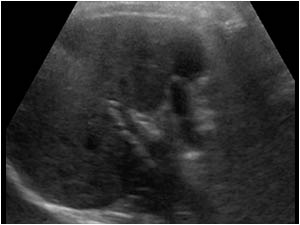The bile duct is one of the most important areas of the digestive system in the body. It is a small passage in the body that has several tiny hollows and tubes. The bile secretes bile salts that are responsible for the absorption of fats from foods.
The bile duct can be divided into many sections. Different parts of the bile duct are different names for the same structures. In the gallbladder, bile produces bilirubin that makes up bile acids. In the liver, bilirubin is separated from bile acid by a thin layer of bilirubin crystals. The gallbladder secretes bile through a tube called the bile channel.
The liver has two ducts, which are separated by a membrane known as the biliary tree. These ducts come together to form small tubes called ductules. These ducts merge together and become large ducts called the small intestine, which carries food from the stomach to the intestines. The intestine is separated into two sections, the duodenum and the jejunum. There is another small bile duct in the colon that transports bile acids to the gallbladder.
When the bile duct becomes enlarged or blocked, it causes discomfort, fever, and vomiting. Bile acids can also be absorbed into the bloodstream causing anemia. The most common causes of this condition are gallstones or cysts.
There are several common symptoms of biliary problems. These include: nausea, abdominal pain, vomiting, bloody stools, and abdominal bloating. These symptoms often occur in association with a fever, and may occur even when a patient is resting or sitting still. Sometimes a patient may have cramps and irregular heartbeats, although these may not be present when the bile duct obstruction is first noticed.
Treatment of biliary duct obstruction usually includes surgery. Surgery can be performed to remove the gallbladder stones, or can be used to remove the biliary duct itself. if the obstruction is severe. If the cause of obstruction is gallstones, surgical procedures are often followed by medications to reduce or eliminate the formation of new gallstones.

Surgery is very effective in removing gallstones
In most cases the procedure will require a hospital stay
A catheter is inserted into the biliary canal through which a solution is passed down into the duct to dissolve the crystals that form in the duct. The catheter is removed from the anus and the ductal lumen is flushed with water.
In some patients the small bile duct may be difficult to open and can only be opened with surgery. This surgery can be done under general anesthesia, or through a small incision made into the skin at the base of the pancreas or around the bile duct.
When a surgical procedure is not successful, there is the possibility of herbal remedies. Herbal supplements that help to dissolve gallstones are available from your doctor. These herbal supplements can be used as a treatment after surgery or to relieve pain.
The results of these herbal remedies are not guaranteed and may not have any effect if the cause of gallstones is gallstones. However, if gallstones do not form, herbal remedies can be used as a preventative measure.
Some doctors are of the opinion that herbal remedies are safe, but there is no evidence to support this belief. The Food and Drug Administration does not regulate the use of herbal remedies.
Biliary blockage is very serious. If this condition is left untreated, it can lead to serious complications, such as perforation of the bile duct or even a more serious complication called peritonitis. The risks of surgery are also higher than when you choose a non-surgical treatment.